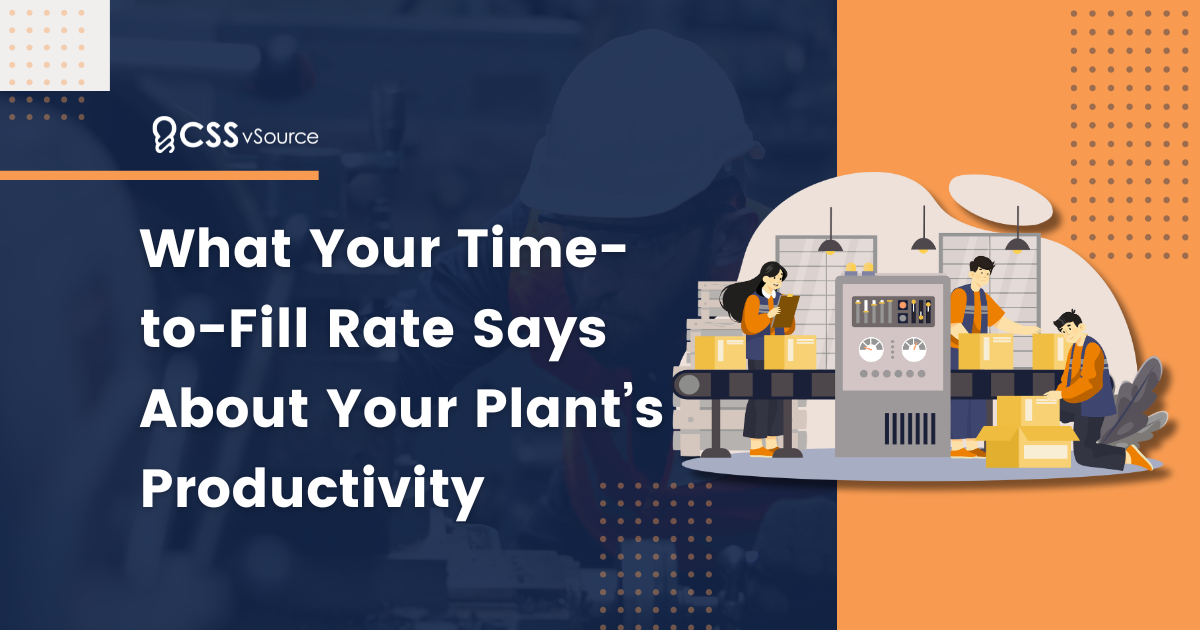In a manufacturing environment, every hour counts. When critical production roles remain unfilled, it’s not just an HR issue—it’s a threat to operational efficiency. That’s why your time-to-fill rate is more than a hiring metric: it’s a direct reflection of how well your workforce strategy supports productivity on the floor.
Why Time-to-Fill Matters
Time-to-fill refers to the number of calendar days between when a job requisition is opened and when an offer is accepted. In manufacturing, where shifts run on tight schedules and output goals are non-negotiable, long time-to-fill rates can have serious consequences:
- Missed production targets due to understaffed lines
- Increased labor costs from excessive overtime or temporary coverage
- Higher turnover as existing staff are stretched thin
- Lower quality control as teams operate below optimal capacity
Put simply: when roles stay open, productivity suffers.
What Your Fill Rate is Telling You
Tracking time-to-fill reveals more than just speed. It highlights operational inefficiencies within your hiring process. For example:
- Are job orders inconsistent or delayed in being approved?
- Are staffing vendors slow to submit qualified candidates?
- Is there a backlog in scheduling interviews or onboarding?
- Is your workforce plan too reactive instead of proactive?
These insights are essential for identifying bottlenecks and building a workforce strategy that aligns with production demand.
How VMS and MSP Partners Can Help
Vendor Management Systems (VMS) and Managed Service Providers (MSPs) bring structure, visibility, and accountability to the hiring process, particularly for manufacturers with high-volume or multi-site staffing needs.
Here’s how they can directly improve your time-to-fill rate:
- Standardized Requisition Workflow: VMS platforms centralize job orders and streamline the approval process, ensuring staffing needs are addressed faster.
- Real-Time Analytics: Gain visibility into average fill times by role, shift, supplier, and location—so you can spot lags and act quickly.
- Vendor Performance Management: MSPs hold your staffing suppliers accountable by tracking submission speed, quality, and time-to-fill across the board.
- Forecasting Support: By analyzing hiring trends and labor spikes, MSPs help you anticipate needs before they disrupt production.
- Consolidated Communication: A single point of contact eliminates the back-and-forth, speeding up sourcing and reducing administrative delays.
From Lagging Metrics to Leading Productivity
Manufacturers that treat time-to-fill as a strategic KPI—not just a recruiting stat—are better positioned to maintain uptime, control labor costs, and meet production targets.
If your roles are sitting open for too long, it’s time to evaluate your current hiring process and consider whether a VMS or MSP partner can help you optimize it. In a competitive labor market, the manufacturers that move the fastest—and smartest—win.
Looking to Improve Time-to-Fill and Streamline Your Contingent Workforce Strategy?
CSSvSource partners with manufacturers to bring clarity, speed, and accountability to complex staffing programs. Let’s talk about how we can help you stay fully staffed and production-ready.

